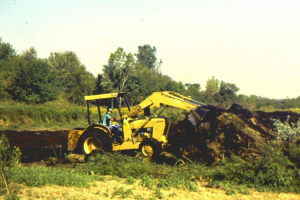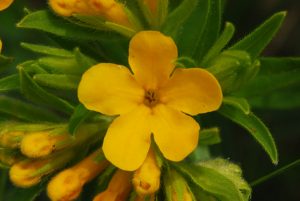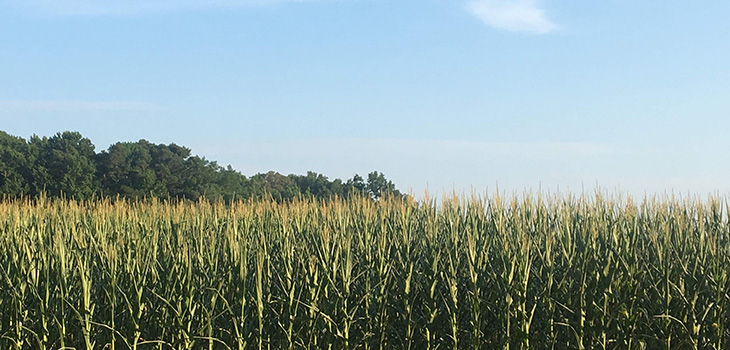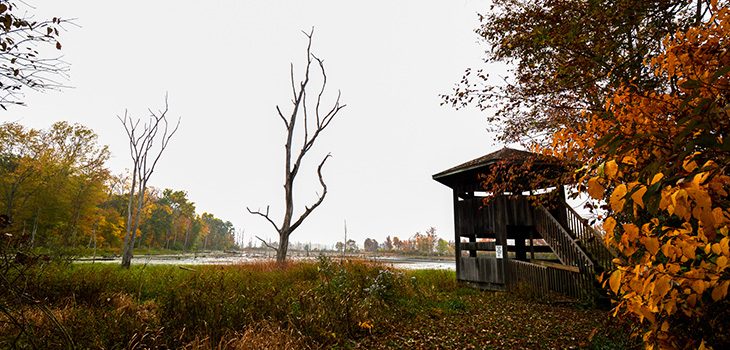 Merry Lea fans may be unaware of the wealth of information available under the land management tab on Merry Lea’s website. These pages describe the ecosystems that make up Merry Lea and the restoration projects underway or completed.
Merry Lea fans may be unaware of the wealth of information available under the land management tab on Merry Lea’s website. These pages describe the ecosystems that make up Merry Lea and the restoration projects underway or completed.
Director of Land Management Bill Minter prepares the content for these pages. Bill has a long history with Merry Lea’s landscape. He has been employed at Merry Lea since 1991 and has consulted here as early as 1981. Since restoration projects may take decades, the land management pages often describe how the land was used in the past and what challenges arose during a restoration.
Hikers may be surprised to learn how many years of work and attention lie behind areas that appear natural today. For example, a visitor to the page about the North Sandhill Savanna learns that this restoration began in 1994. Fourteen years later, in 2008, Bill celebrated the appearance of hoary puccoon, a flower species endemic to black oak savannas.
 Bill says his primary audiences are his co-workers and Merry Lea’s post-secondary students. Making land management pages available online is helpful to each new group of master’s students as they prepare projects for their natural history course. The pages also keep staff informed on land management activities that may impact their programming.
Bill says his primary audiences are his co-workers and Merry Lea’s post-secondary students. Making land management pages available online is helpful to each new group of master’s students as they prepare projects for their natural history course. The pages also keep staff informed on land management activities that may impact their programming.
Treasure hunt
Community members can benefit from the this public information as well. Put yourself in the shoes of the people described below. Can you find webpages that would help them at www.goshen.edu/merrylea?
1. You’re planning to come for a day hike and you’re a person who likes to know what you’re looking at.
2. You recently bought a ten-acre property with some weedy areas you’d like to turn into prairie. You wonder what’s involved and how long the process might take.
3. You’ve never come to Merry Lea because you are physically disabled, but you are a donor. You want to know more about what makes this nature preserve deserving of your dollars.
4. You’re the father of a home-schooled geology buff. She’s preparing a school project on kames and you’d like to take her to one.
5. You’re an environmental science undergraduate with an interest in field biology. You’re trying to learn to identify different wetland ecosystems.
6. You’re a researcher from another institution who studies sedge meadows. You’re curious whether any sedge meadow restoration has been done at Merry Lea.
Extra Credit
What factors led to the disappearance of the oak savannas that were present on what is now Merry Lea before European settlement?
What is the difference between shrub-carr and a swamp?



